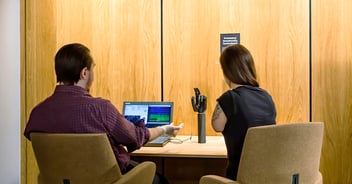Using Prostheses to Regain Control
Losing a limb due to an accident or illness is always difficult, every day activities become difficult or impossible without someone's help. Very often patients feel guilty or ashamed to ask others for help, thinking they are a burden to their loved ones. However, with rehabilitation and the fitting of a prosthesis, patients will be able to regain control of their lives and independence.
Changed body image
Losing a part of your body is something that most people are not able to hide fully even though the want and desire is to be inconspicuous in public. Many people try to blend into crowds with clothing types and hiding their residual limb. Unfortunately, sometimes the change in body image can affect individuals adversely when strangers stare or make comments.
Fortunately some amputees can choose prosthetics to gain more confidence in public and rid unwanted attention from others. Even though bionic hands do not look anthropomorphically like other hands the function that is gained can impact users and can slowly go back to performing everyday tasks without additional help.
Mental health
Before and after the amputation patients might experience anxiety or even depression due to the knowledge they are going to lose the limb. Another issue, especially for patients who have lost their limb in accidents, is PTSD. Patients can struggle with flashbacks, panic attacks or even insomnia. Not only patients but also their family and friends can experience anxiety or depression due to the limb loss.
It is essential for patients to talk about their feelings during the process of rehabilitation, they have to be assured their emotions are valid and seek counseling if needed. It’s also recommended for family members and friends to express their emotions and to seek psychological support as well. Besides attending rehabilitation and receiving support from family, amputees can attend group meetings with other amputees so they feel a sense of community.
Rehabilitation
Rehabilitation is a key in the process of getting through grief and regaining control of one's life. Living a new life and learning how to perform everyday tasks without a limb can be difficult and amputees might feel helpless with the new obstacles they face. During the process of rehabilitation patients are doing exercises to strengthen their muscles and get ready for a prosthesis. After limb amputation, patients that experience phantom pain that can be alleviated by Graded Motor Imagery. This is a non-invasive treatment consisting of three stages of Laterality Reconstruction, Motor Imagery and Mirror Therapy.
Not only it may decrease pain but also improve muscle control, and it is recommended to consult an experienced therapist who will guide patients through techniques of this treatment. Not every patient needs or wants a prosthesis but possessing one can be therapeutic and can assist in performing everyday tasks. In particular, having a myoelectric prosthesis which, thanks to the grip patterns, allows patients to perform simple and more complex tasks.











